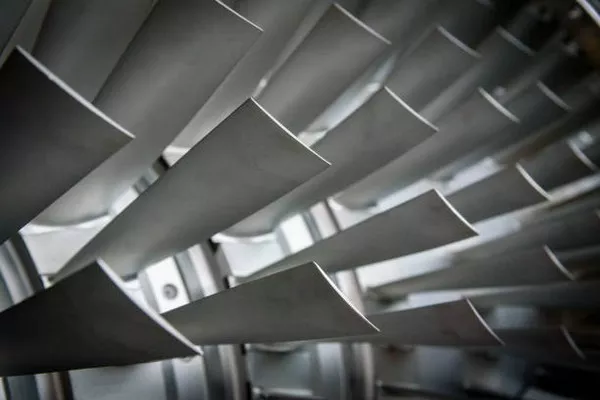In the fast-paced rhythm of contemporary living, air conditioning has seamlessly woven itself into the fabric of our homes, offices, and vehicles, offering a haven of comfort. Yet, as we revel in the cool embrace of our air-conditioned spaces, it is imperative to pause and consider the ecological footprint left by these modern amenities.
We embarks on an exploration of the fundamentals of AC gas, unraveling the intricacies of the gases that propel our cooling systems and the indispensable need for climate-friendly practices. We will delve into the crucial decision-making process involved in selecting the right refrigerant for your air conditioning unit, with a spotlight on TCL’s groundbreaking line of eco-friendly air conditioners. These innovations prioritize not only energy efficiency and reliability but also environmental sustainability.
Unveiling the Basics of AC Gas
At the core of air conditioning technology lies Air Conditioning (AC) gas, a versatile fluid employed in a spectrum of appliances, including air conditioners and refrigerators. Its primary function is to absorb heat from the confines of a room and release it into the atmosphere, creating a cool and comfortable indoor environment.
The refrigerant cycle, a four-stage process comprising compression, condensation, evaporation, and expansion, propels this intricate dance of temperature manipulation. The ideal AC gas, therefore, must possess non-corrosive, non-toxic, and climate-friendly properties, ensuring its safe utilization without adverse effects on human health or the environment at large.
Choosing Wisely: The Gases in Your AC
When venturing into the realm of air conditioning, the pivotal decision of choosing the right refrigerant becomes paramount. The gases used in AC units, notably R290 and R32, stand out as eco-conscious alternatives to their predecessors, R12 and R22.
R290, commonly known as propane, emerges as an environmentally friendly substitute for R22 and R502 in various refrigeration and air conditioning applications. Despite its flammability, R290, a hydrocarbon, boasts an effective refrigeration capability with a low Global Warming Potential (GWP). Classified as non-toxic with a safety rating of A3, it presents a commendable choice for conscientious consumers.
On the other hand, R32, an HFC refrigerant, steps in as a replacement for R410A in low-temperature refrigeration and air conditioning setups. Classified as mildly flammable and non-toxic with a safety rating of A2L, R32 aligns with modern sustainability goals, offering a safer alternative while still delivering optimal cooling performance.
TCL’s Eco-Friendly Air Conditioners: A Paradigm Shift
Introducing TCL’s revolutionary line of eco-friendly air conditioners, a testament to the brand’s commitment to environmental responsibility. The range includes portable and wall-mounted units, spanning from 9000 to 24000 BTU, catering to diverse cooling needs. With features such as heating mode and energy-efficient cooling, TCL positions itself at the forefront of innovation in the air conditioning landscape.
Noteworthy among TCL’s offerings is the GENTLECOOL SERIES AC, a premium air conditioner designed to elevate the cooling experience while championing environmental consciousness. Equipped with R32 refrigerant, boasting a low GWP and heralded as an environmentally friendly alternative, the GENTLECOOL SERIES AC goes beyond conventional cooling. Its additional features, including an energy-saving mode, a 24-hour timer, and air purification capabilities, create an optimal indoor environment that aligns with both comfort and sustainability.
The Refrigerant Symphony: How it Works
To comprehend the prowess of these eco-friendly refrigerants, a glimpse into the workings of a refrigeration cycle is essential. A refrigerant, a substance capable of transitioning between liquid and gas states at varying temperatures, embarks on a cyclical journey within the air conditioning unit.
Initiating as a high-pressure liquid, the refrigerant passes through the expansion device, experiencing a drop in pressure that cools it to a low-pressure liquid. This chilled liquid then traverses the evaporator coils, absorbing heat from the surroundings and transforming into a low-pressure gas.
Circulating through the compressor, the refrigerant undergoes compression, transforming into a high-pressure gas once again. This gas proceeds through condenser coils, cooling back into a high-pressure liquid, thus reinitiating the cycle.
Making Informed Choices: The Ban on Refrigerants
In a world increasingly conscious of environmental impact, the ban on certain refrigerants underscores the need for consumers to make informed choices. When in the market for a new air conditioner, it is prudent to opt for models that prioritize energy efficiency and eco-friendliness.
TCL air conditioners stand as exemplars of this ethos, offering a diverse range of units designed with eco-friendliness in mind. The emphasis on energy efficiency and reliability ensures that consumers not only enjoy the benefits of cutting-edge technology but also contribute to a sustainable future.
See Also What Does A Compressor Do To Audio
The Path Forward: A Call to Action
As we conclude this exploration into the fundamentals of AC gases, the time for action is now. Embrace the right kind of gas, one that not only cools your space efficiently but also treads lightly on the environment. TCL’s eco-friendly air conditioners stand as beacons of this progressive approach, providing a harmonious blend of cooling technology and environmental responsibility.
Embark on this journey towards sustainable cooling, ensuring a comfortable and eco-conscious future for generations to come. For further insights and updates on TCL products and events, connect with us on Facebook, Instagram, Twitter, and YouTube. Together, let’s forge a path towards a cooler, greener tomorrow.

